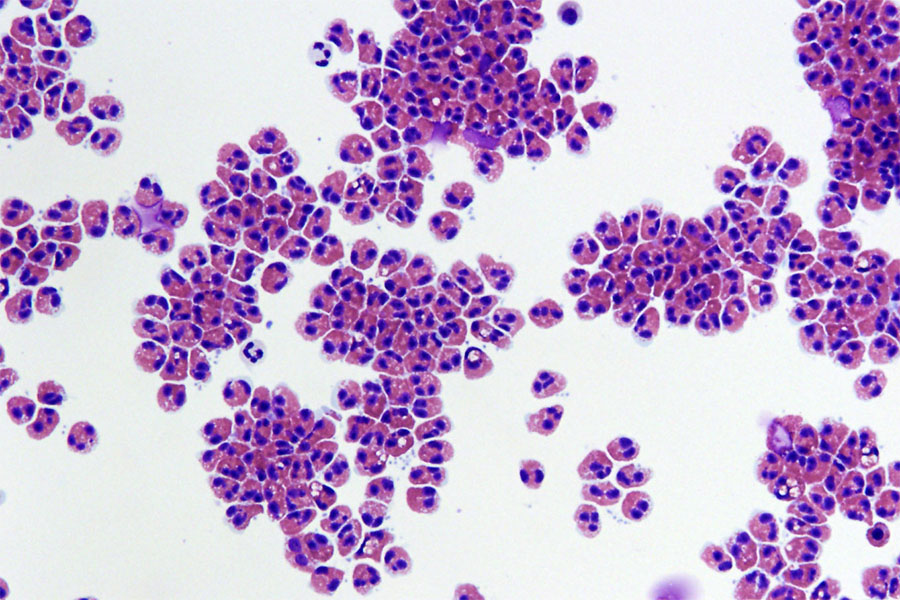NIH-Supported Scientists Discover New Personalized Approach to Diagnosing and Treating Rare Food Allergy Disease

Human eosinophils, a type of white blood cell, are shown isolated from blood. In patients with eosinophilic esophagitis, these cells store and release packages of inflammatory proteins (red) that can damage the throat and esophagus. (Cincinnati Children’s Hospital Medical Center Photo/Julie Caldwell)
Diagnosing and treating rare diseases can be difficult, in part due to widely dispersed and small populations of both patients and scientific experts. This lack of sufficient access to patients and expertise makes it challenging to understand the natural course of a rare disease and, in some cases, its different forms.
Eosinophilic esophagitis (EoE) is a rare and potentially dangerous food allergy disease caused by an immune system reaction that results in damage to the throat and esophagus (which connects the throat and stomach) and problems with swallowing. To improve the understanding of EoE, scientists at Cincinnati Children’s Hospital Medical Center and the Consortium of Eosinophilic Gastrointestinal Disease Researchers (CEGIR) examined — and studied tissue samples from — 185 child and adult patients with EoE from 10 sites associated with the consortium. The CEGIR is supported by NCATS' Rare Diseases Clinical Research Network and the National Institutes of Health’s National Institute of Allergy and Infectious Diseases and National Institute of Diabetes and Digestive and Kidney Diseases.
The researchers assessed the patients by detailing their individual genetic and clinical features, as well as the appearance of their diseases through an endoscope — which enabled them to peer into the esophagus — and under a microscope. Through this four-pronged approach, they identified three distinct forms of EoE that were each associated with different clinical and genetic characteristics. This advance is reported in The Lancet Gastroenterology & Hepatology.
“In the past, patients were diagnosed with EoE, or they weren’t,” said co-author Marc Rothenberg, M.D., Ph.D., at Cincinnati Children’s. “Now that we know there are three distinct forms of this disease, we’re developing a more personalized approach to helping these patients.”
Posted June 2018


